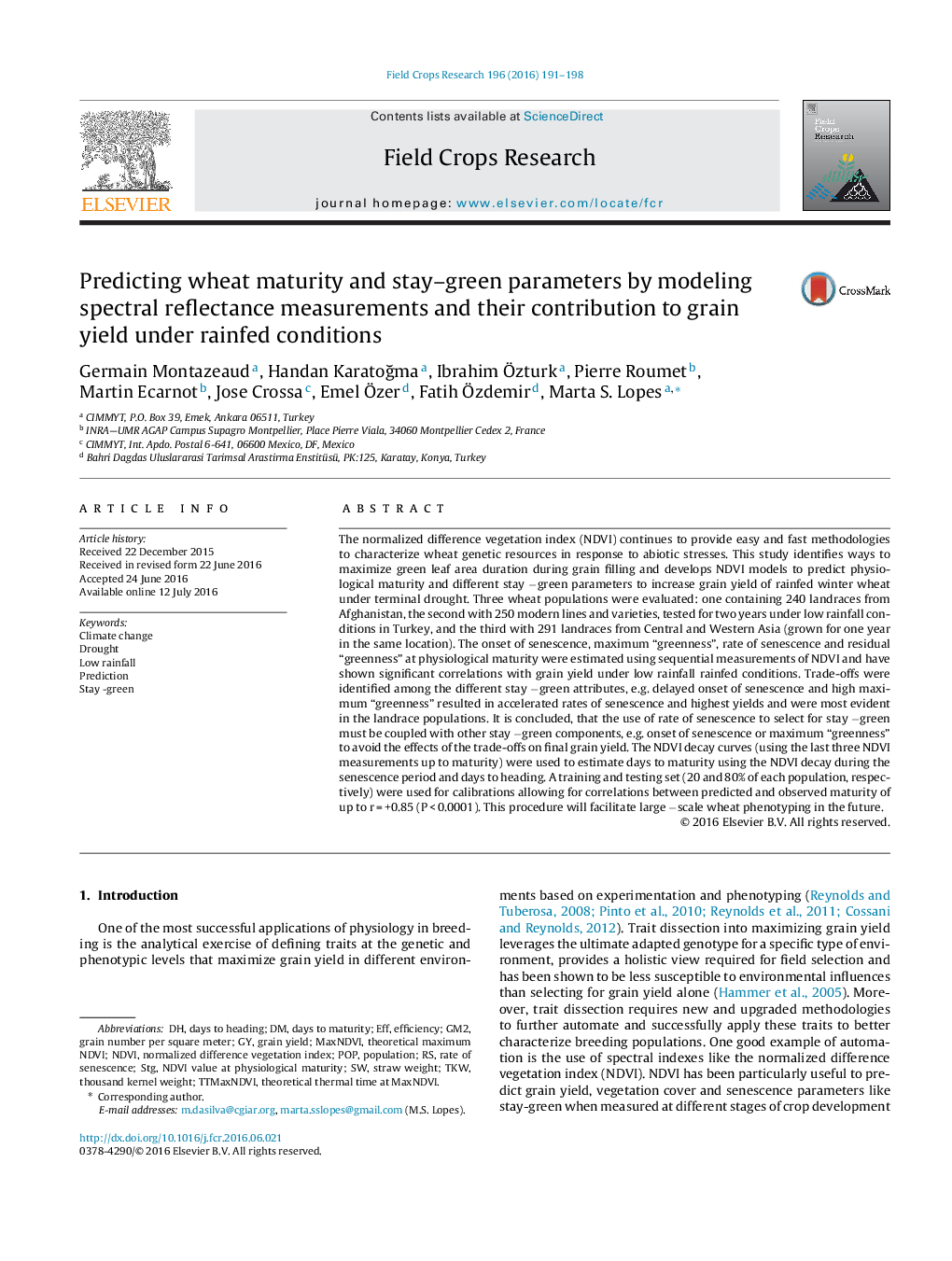| Article ID | Journal | Published Year | Pages | File Type |
|---|---|---|---|---|
| 6374527 | Field Crops Research | 2016 | 8 Pages |
â¢Components of stay-green include onset of senescence, maximum 'greenness', rate of senescence and residual senescence.â¢Components of stay-green were estimated by sequential measurements of normalized difference vegetation index (NDVI).â¢Higher grain yields were associated with delayed onset of senescence, increased maximum greenness and accelerated rates of senescence.â¢Delayed onset of senescence and high maximum “greenness” resulted in accelerated rates of senescence.â¢A new procedure is suggested for estimating days to maturity using sequential NDVI measurements and heading date.
The normalized difference vegetation index (NDVI) continues to provide easy and fast methodologies to characterize wheat genetic resources in response to abiotic stresses. This study identifies ways to maximize green leaf area duration during grain filling and develops NDVI models to predict physiological maturity and different stay âgreen parameters to increase grain yield of rainfed winter wheat under terminal drought. Three wheat populations were evaluated: one containing 240 landraces from Afghanistan, the second with 250 modern lines and varieties, tested for two years under low rainfall conditions in Turkey, and the third with 291 landraces from Central and Western Asia (grown for one year in the same location). The onset of senescence, maximum “greenness”, rate of senescence and residual “greenness” at physiological maturity were estimated using sequential measurements of NDVI and have shown significant correlations with grain yield under low rainfall rainfed conditions. Trade-offs were identified among the different stay âgreen attributes, e.g. delayed onset of senescence and high maximum “greenness” resulted in accelerated rates of senescence and highest yields and were most evident in the landrace populations. It is concluded, that the use of rate of senescence to select for stay âgreen must be coupled with other stay âgreen components, e.g. onset of senescence or maximum “greenness” to avoid the effects of the trade-offs on final grain yield. The NDVI decay curves (using the last three NDVI measurements up to maturity) were used to estimate days to maturity using the NDVI decay during the senescence period and days to heading. A training and testing set (20 and 80% of each population, respectively) were used for calibrations allowing for correlations between predicted and observed maturity of up to r = +0.85 (P < 0.0001). This procedure will facilitate large âscale wheat phenotyping in the future.
